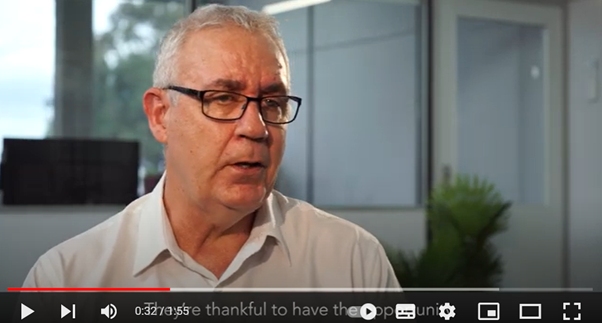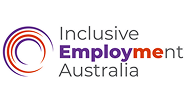
New research from the Australian Network on Disability (AND) uncovered that 68% of its member organisations, such as major universities, government departments and some of Australia’s largest corporations, do not have targets for employing people living with disability.
While half of Australian managers and human resource professionals in another recent YouGov survey, said their business has never hired a person living with disability.
Yet, last year in 2022, around one- in-six people were estimated to be living with a disability, many of which are invisible. Thus, it is likely your workforce is already more diverse than you think. However, there is still more to be done; the unemployment rate for people living with disability has been hovering around ten per cent for many years.
atWork Australia’s Disability Employment Services Ambassador, Shaun Pianta, who lives with disability, has been conducting Disability Awareness Training with organisations for several years.
He says that “Many of the employers who work with atWork Australia are very open to hiring people living with disability, but they sometimes have misconceptions of what disability might mean to their organisation or are unsure of how to approach asking about disability.”
“Our goal is to amplify the conversation around disability and encourage more employers to take part in inclusive recruitment,” said Shaun.
“Together we can champion diversity at every stage; including measuring and understanding diversity and inclusion, so we can work together to make improvements.”
Here from some of our employer partners on the benefits of diversity in their workplace. 
Here are some ways you can support your organisation to be inclusive and diverse:
Disclosure and asking about disability
In the AND survey, employers said they didn’t know how to ask about disability in an appropriate way or had concerns around privacy.
“As an employer it’s about making sure the doors are open to make candidates feel comfortable to disclose their disability,” said Shaun.
“People will feel more open to disclose their disability if an employer looks to value diversity and inclusion. Some ways you can do this are: by asking inclusive questions, such as what modifications would help the employee be more productive? And, by speaking about awareness days and mental health support regularly.”
For some candidates, the recruitment process might not be the best time to share information, they may feel more comfortable once they are settled into a role. So, asking about diversity shouldn’t only be done during the recruitment and onboarding process.
Attracting skilled candidates living with disability
Employers also raised that people living with disability weren’t applying for their roles, or that it was additional work to target minority groups.
This is where working with a Disability Employment Services provider such as atWork Australia is beneficial. atWork Australia has access to a wide talent pool of candidates ready for work and supply pre-screened candidates suitable for the role.
atWork Australia can also help with workplace modifications and any additional support that may feel overwhelming to an employer when looking to hire a diverse workforce.
Making the recruitment process accessible from start to finish
Employers should consider how accessible their recruitment process is from start to finish.
“All people want is a fair opportunity in the recruitment process, for employers to have an open mind towards how a task can be done, and to be considered according to their skill set and experiences they can bring, not their personal situation”, said Shaun.
Here are a few suggestions for each stage of the recruitment process:
Advertisement:
- Avoid PDF attachments as these can be difficult for screen readers;
- Include a contact person and phone number so candidates can ask additional questions; and
- Ask the preferred method of contact in an application and contact the candidate using this method, as it sets them up for success.
Booking in an interview:
- Provide details about accessibility when booking in an interview and be flexible on interview times;
- Provide details and expectations of the interview, such as if it will be online or in person, which platform will be used, whether captioning will be available and how many people will be present; and
- Ask the applicant if there are any adjustments which can be made to ensure they can perform at their best, such as an Auslan interpreter etc.
Interview:
- Ask if a break is needed during a long interview;
- Keep in mind accessibility of the interview location;
- Ask about the interview space before you start to make sure the lighting is suited to someone with sensory issues, or maybe needs more light for those with impaired vision etc.; and
- Ask a set of common interview questions for all candidates; focus on the essential skills and abilities they will need to do the job. Avoid personal questions about a candidate’s disability as it has no bearing on their performance in the role.
Businesses that embrace diversity and inclusion attract a broad range of talent to their business; different perspectives, ideas and thinking patterns which can only add value to the business and help relate to a more diverse client base.
“Through my work, I’ve seen first-hand that fear of the unknown can lead employers to overlook employing people living with disability. But there is a motivated group of individuals, able and willing to prove them wrong. It’s time to challenge the way we think about disability when it comes to employment in Australia, to grow a more inclusive workforce”, continued Shaun.
For more information visit https://staging.atworkaustralia.com.au/employers/


